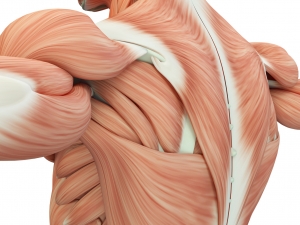Beta-Alanine For A Competitive Advantage

Evan Stevens
The third talk discussed the possible additive benefit of beta-alanine and interval training on cycling time trial performance. Beta-alanine is a precursor (and rate-limiting substrate) to carnosine synthesis. Carnosine is an important dipeptide found in muscle fibers and can act as an antioxidant. This can increase the amount of time a muscle cell can safely divide, reduce telomere shortening, and has lots of other implications for anti-aging.
However, beta-alanine is often used in athletics. Not only as a way to improve performance, but also as a way to buffer lactic acid. We have also already seen that HIIT can be used to improve performance. So it stands to reason that there might be a benefit to using them both.
Researchers asked trained cyclists to train normally for four weeks while going through a beta-alanine loading phase (6.4 grams per day). They then underwent five weeks of interval training. This involved twice a week of four times a kilometer sprint on four minutes rest, while under a maintenance carnosine load of 1.2 grams per day.
Building Up Beta-Alanine
The loading phase of carnosine is performed because it takes time to accumulate and build in your muscles. Over the course of the five weeks of interval training, researchers found that the cyclists that had taken the beta-alanine loading and maintenance improved significantly on the third and fourth sprint interval over their peers in the placebo group.
In fact, they found that the beta-alanine supplemented group had two times the tolerance for exercise than the placebo group. In a four kilometer and ten kilometer time trial, the supplemented group improved on their times by an average of three and four percent, respectively. While not significant when compared to the baseline, small increases at an elite level can mean the difference between a gold medal and going home empty-handed. The additional carnosine in the muscles allows for more work to be done at a higher intensity. It essentially helps to buffer the pH change caused by the increase in lactic acid build-up in working muscles.
Benefits of Beta-Alanine
Beta-alanine supplementation can significantly improve sequential interval performance and can improve the ability to work at higher intensities. While time trial performance was non-significantly improved in highly trained individuals, the changes were large enough to warrant use and can improve tolerability of training by acting as a pH buffer.

The first few talks in this session reiterated that beta-alanine can be used to improve carnosine in the muscle. Beta-alanine supplementation can eliminate the cycling that carnosine undergoes in the muscle so that levels remain high. Namely, 1.2 grams of maintenance beta-alanine leads to a 40% increase in carnosine levels over a four week period, after the build-up phase. The increased carnosine levels also seem to be able to “prime” the muscles. This makes them more able to respond to the next bout of exercise. It reduces the twitch relaxation speed and allows for faster recovery from stimulus in both fresh and fatigued muscles.
The improvement in muscle firing was seen regardless of exercise being performed. Studies were done in cyclists, track runners, and some even with judo throws. The beta-alanine simply meant better ability to work and perform at a lactate threshold.
Take Away
Beta-alanine can improve parameters of performance and recovery. Raised carnosine levels result in muscles being able to come back to a recovered state after stimulus, faster than muscles that do not have increased carnosine levels.
You Might Like:














